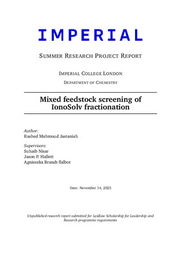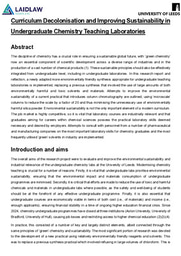Project Outline: Investigation into the effect of cigarette and e-cigarette exposure on prenatal facial movement with comparison to no exposure.

Investigation into the effect of cigarette and e-cigarette exposure on prenatal facial movement with comparison to no exposure.
The use of cigarettes during pregnancy is advised against due to the negative implications on fetal development, such as reduced pre and postnatal growth (Vielwerth et al., 2007). Stopping smoking can be challenging due to cigarettes containing the addictive chemical nicotine (NHS, 2022). Recommendations are given to use nicotine alternatives, one being e-cigarettes, a suggested less harmful alternative, facilitating the smoke-free provision of nicotine (NHS, 2020). However, there is increasing academic concern about this. Research has concluded that both fetal e-cigarette and cigarette exposure during pregnancy impact postnatal birth outcomes and motor maturity compared to non-exposed fetuses with high similarities (Froggatt et al., 2020). Reissland et al. (2015) also concluded that the prenatal fetal movement profile differs between those exposed to maternal cigarette use and those without. Due to the postnatal implication of prenatal cigarette and e-cigarette exposure aligning, it is suggested that prenatal fetal movement should also match. This project sets out to investigate whether this can be evidenced; it will act as a pilot study comparing fetal facial movements between those exposed to maternal use of e-cigarettes and cigarettes and those with no exposure. From this, further research can be conducted to identify whether the findings are observable in a larger sample size.
Slotkin et al. (2005) concluded that fetal nicotine exposure during primate pregnancy affects prenatal brain development. This project aims to build on this by studying human fetuses and investigating the difference in effect between the three exposure groups. Froggatt et al. (2020) suggest further study on humans as an important progression for shaping healthcare guidelines. The proposed project aims to produce a written report of the findings and potential recommendations for policymakers regarding the maternal use of e-cigarettes. It will also explain how the research can be built upon with the hope of obtaining publication in an academic journal. In support of this, an academic poster of the project and outcomes will be produced, suitable for presentation at an academic conference.
This project presents social and political significance, largely regarding healthcare. Findings will expand knowledge of the effects of maternal actions on prenatal development. If a significant difference is identified, expanding these findings through further research could lead to policy changes that could reduce the risk of preventable fetal development defects and the inequalities these individuals may face.
Research areas:
To understand the effect of cigarette and e-cigarette exposure on human prenatal facial movement and whether they differ, the following three research questions will be addressed.
- What are the effects of nicotine on prenatal development?
- Is there a difference in prenatal facial movement between three study groups: fetuses exposed to maternal use of cigarettes, fetuses exposed to maternal use of e-cigarettes, and fetuses with no exposure?
- What are the potential implications of the results for policymakers?
Methodology:
This project is a pilot study, as outlined in the introduction, investigating whether there is an observable difference in human prenatal facial movement between those exposed to maternal e-cigarette use compared to cigarette use, building upon prior academic research. The project has received NHS ethical approval.
A literature review of the effects of nicotine on prenatal development will be conducted to identify whether there are any specific effects of exposure. Nicotine is present in both cigarettes and e-cigarettes and therefore, it is helpful to have a background understanding of the known effects of this chemical prenatally. This project will then build on this by identifying whether there is a difference between exposure to the two with regard to facial movement.
Training will be completed to gain proficiency at completing fetal ultrasound movement coding. This will involve learning how to code using the Fetal Observable Movement System (FOMS) (Reissland et al., 2016). The upper facial movement of 30 4D ultrasound scans for the three study groups will then be coded. Five will coded for each group, at both 32 weeks and 36 weeks. The results for each will be compared alongside codes of the lower facial movements for each scan, already completed by Dr Suzanne Froggatt-Gray. Statistical analysis will identify any significant variation between the three exposure groups. These findings will provide a basis for future coding and analysis. To conclude, research will be conducted to understand the potential implications the findings obtained may have on healthcare policymaking regarding maternal use of cigarettes and e-cigarettes.
Schedule:
Week 1-2: Completion of the literature review and training in 4D ultrasound coding using the Fetal Observable Movement System(FOMS) (Reissland et al., 2016).
Week 3-5: Coding the 4D ultrasound scans, completing two scans each day.
Week 5-6: Analysis of the coded scans, research into the implications of findings for policymakers and final report write-up.
References:
Froggatt, S., Reissland, N. and Covey, J. (2020). The Effects of Prenatal Cigarette and e-cigarette Exposure on Infant neurobehaviour: a Comparison to a Control Group. EClinicalMedicine, 28, p.100602. doi https://doi.org/10.1016/j.eclinm.2020.100602.
NHS (2020). Stop Smoking in Pregnancy. [online] nhs.uk. Available at: https://www.nhs.uk/pregnancy/keeping-well/stop-smoking/ [Accessed 1 Feb. 2025].
NHS (2022). Stop Smoking Treatments. [online] NHS. Available at: https://www.nhs.uk/conditions/stop-smoking-treatments/ [Accessed 1 Feb. 2025].
Reissland, N., Francis, B. and Buttanshaw, L. (2016). The Fetal Observable Movement System (FOMS). Fetal Development, pp.153–176. doi https://doi.org/10.1007/978-3-319-22023-9_9.
Reissland, N., Francis, B., Kumarendran, K. and Mason, J. (2015). Ultrasound Observations of Subtle movements: a Pilot Study Comparing Foetuses of Smoking and Nonsmoking Mothers. Acta Paediatrica, 104(6), pp.596–603. doi https://doi.org/10.1111/apa.13001.
Slotkin, T.A., Seidler, F.J., Qiao, D., Aldridge, J.E., Tate, C.A., Cousins, M.M., Proskocil, B.J., Sekhon, H.S., Clark, J.A., Lupo, S.L. and Spindel, E.R. (2005). Effects of prenatal nicotine exposure on primate brain development and attempted amelioration with supplemental choline or vitamin C: neurotransmitter receptors, cell signaling and cell development biomarkers in fetal brain regions of rhesus monkeys. Neuropsychopharmacology: Official Publication of the American College of Neuropsychopharmacology, [online] 30(1), pp.129–144. doi https://doi.org/10.1038/sj.npp.1300544.
Vielwerth, S.E., Jensen, R.B., Larsen, T. and Greisen, G. (2007). The Impact of Maternal Smoking on Fetal and Infant Growth. Early Human Development, 83(8), pp.491–495. doi https://doi.org/10.1016/j.earlhumdev.2006.09.010.





Please sign in
If you are a registered user on Laidlaw Scholars Network, please sign in